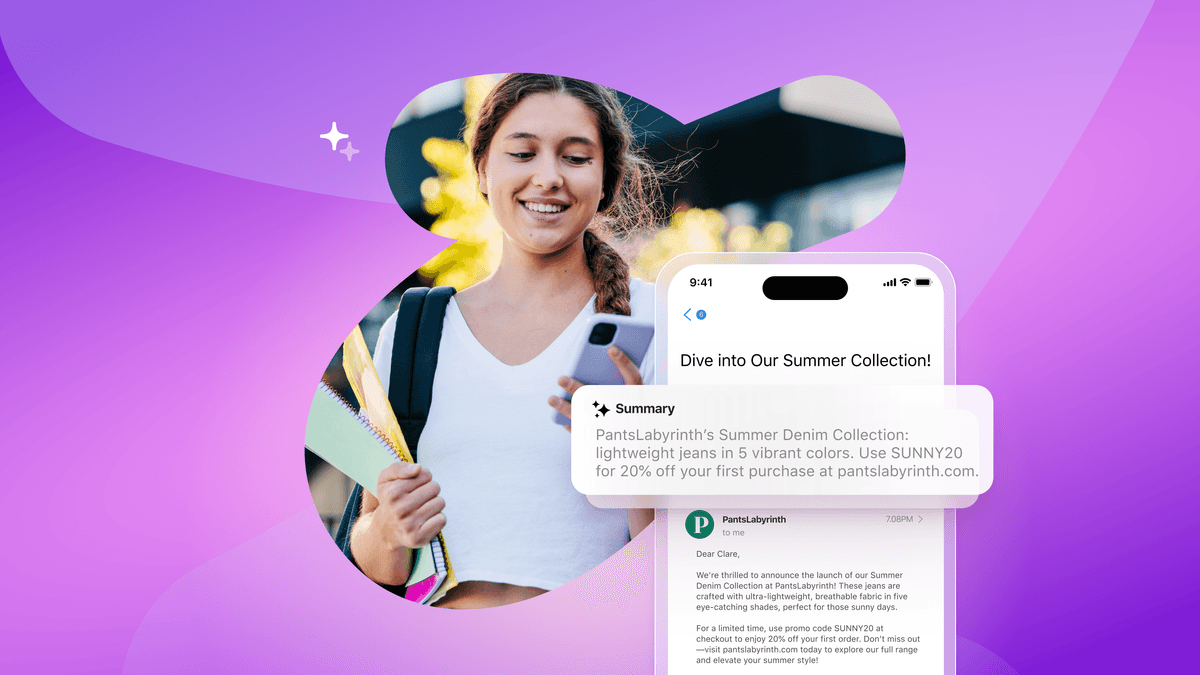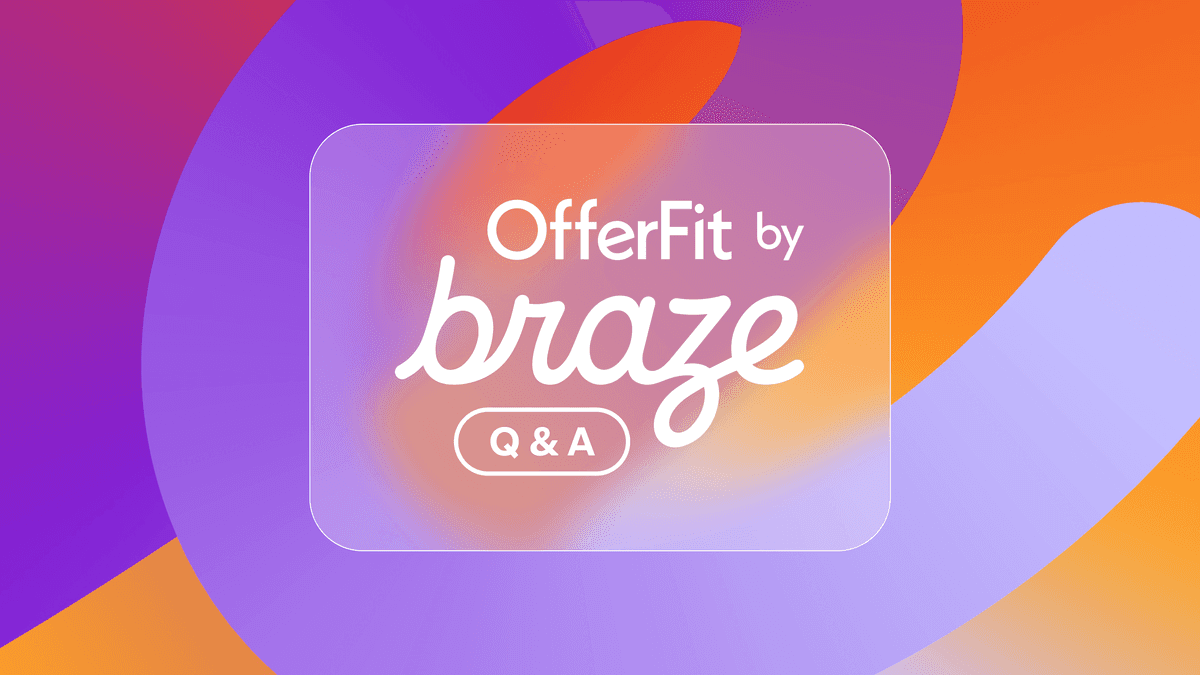Key Customer Engagement Considerations for Retailers During Back to School 2021
Published on August 13, 2021/Last edited on August 13, 2021/9 min read


Emily Moschet
Senior Strategic Business Consultant, Industry Solutions, BrazeConsider back to school season. For decades, this time of year was defined by a flow of frantic activity as students, parents, and teachers alike prepared for the coming school year—in part by heading out to shop for new outfits, new supplies, and other must-haves. But in the wake of the COVID-19 pandemic, many schools found themselves forced to hold classes remotely or to implement hybrid academic programs that combined digital and in-person learning in an effort to balance educational needs and safety concerns. That shift had a notable impact on school-related norms, including traditional back to school shopping.
This fall, we’re finally on the cusp of moving past the “new normal” of COVID-era schooling and into a “next normal” that will define the coming years. For retailers, understanding this new paradigm and responding to it swiftly and thoughtfully is an essential part of ensuring a successful back to school period. To help out, let’s explore key back to school-related trends, including shifts in shopper behavior, and dig into effective strategies that retail and eCommerce brands can leverage to make the most out of this important shopping period.
Trend #1: Shoppers Are Becoming Savvier
During the height of the pandemic, people around the world were forced to lockdown for weeks or months at a time in order to reduce the spread of disease. This sudden shift caused significant hardship, but it also led millions of consumers to explore new brands and new ways of conducting key parts of life online, with many people who’d never had groceries delivered or booked a telehealth appointment, for instance, finding themselves forced to adapt.
One side effect of this major shift? Many consumers have grown comfortable and savvy when it comes to digital shopping, and are increasingly willing to comparison shop when buying online. In fact, over 51% of shoppers visit at least three brand or retailer sites before making a purchase. With the #2 search term on Google related to the 2021 back to school season being "back to school sales" it's no surprise that price is the number one consideration for consumers when they’re looking to buy—followed by convenience and, of course, customer experience, both of which can significantly impact brand reputation!
What does that look like on the ground? Our analysis found:
- Stronger engagement with push notifications: Reflecting the strength of mobile during the pandemic and beyond, back to school push engagement rates grew by 2X from 2019 to 2020 and are poised to keep rising, with a 14% increase taking place in the pre-back to school period this year.
- Gentle growth in terms of email engagement: While less pronounced than with push, email engagement also saw growth during COVID, with back to school-era unique open rates rising nearly 3% from 2019 to 2020, followed by a further 4% bump in the run-up to this year’s back to school season.
- Increased Content Card usage: This emerging channel has begun to heat up over the last year, with Content Card unique click rates trending up 5% in the pre-back to school period as more Braze customers enable low-lift seasonal campaigns and personalized tactics.
- Rising app usage rates: While app usage dipped during the 2020 back to school season, this year’s usage rates are up more than 40% year over year (YoY) in the run-up to this key period, growing from 10.16% in 2020 to 14.46% in 2021.
- Increased shopping conversion rates: This is a bit of a comeback story—while purchase rates dropped 60% between the 2019 and 2020 back to school seasons, we’re seeing a 24% YoY rise as this 2021’s back to school period approaches.
Following the rise of COVID, it’s clear that consumers have become more accustomed to engaging with digital channels, with shoppers increasingly engaging with more channels as they proceed along their online purchasing journeys. Interestingly, while mobile engagement continues to climb, there’s reason to think retailers may be underutilizing web messaging channels. These channels—which include web push notifications and in-browser messages—represent an opportunity for retailers to bolster their engagement and purchase rates while reaching web visitors where they are.
Trend #2: Maintaining Loyalty Is More Difficult Than Ever Before
We’ve been seeing signs for over a year that consumer loyalty might be on the decline. In fact, last summer’s The Future of Retail report found that only 10% of consumers listed “familiarity” as a top consideration when deciding what brands to patronize. But as we approach this year’s back to school season, there’s reason to think that weakening consumer loyalty is becoming more—not less—of an issue for retailers.
Although today’s customers tend to comparison shop more than they did before the pandemic, when it comes to brands they have previously visited, they are becoming more impulsive. As a result, the time between consumers' first and second purchases fell from 4 days to 0.28 days, a 93% drop. However, we’re also seeing that loyalty is harder to maintain, since only 11% of retail and eCommerce customers today become repeat purchasers—a dynamic likely impacted by retailers’ heavy promotional cadence during the back to school time period. Over 61% of shoppers wait for (and shop exclusively around) tentpole sales events including Prime Day, Fourth of July, and Labor Day.
The upshot? While shoppers may be open to impulse buys in connection with these shopping tentpoles, those purchases don’t necessarily result in lasting loyalty or strong retention rates. To get a picture of what retention is likely to look like for this year’s back to school period, let’s look back at differences in behavior between back to school 2019 and 2020, as well as the results we’re in seeing in the pre-back to school period this year:
- Back to school shoppers appear less loyal than other buyers: We saw strong retention rates for consumers who shopped with retailers before and during the back to school season in 2020. However, retention rates were nearly 10% higher among shoppers who bought during the earlier period, suggesting that back to school shoppers are inherently less loyal. This year, we expect to see a back to school retention rate similar to what we saw in 2019, as customers are faced with more online and offline shopping options.
- Retention appears to be trending lower in 2021: Our analysis found that shoppers first acquired in the 2021 pre-back to school time period are significantly less likely to be retained than customers who were acquired during 2020. With brand loyalty seeming to be playing a reduced role as the pandemic slackens, these trends make it even more important that retailers prioritize customer engagement and retention as they head into this key shopping season.
How Retailers Can Effectively Prepare for This Year’s Back to School Season
While there’s no question that back to school shopping events can be a great way to drive customer acquisition and revenue, this year’s trends suggest that driving retention and taking steps to maximize consumers’ lifetime value (LTV) should be a major focus for retailers. Get it right and you can ensure that your top customers return for other peak revenue-driving periods; get it wrong, and you could be facing significant drops in customer retention just as you’re moving into other potentially lucrative seasons (i.e. the holidays!).
Not sure how to make that happen? Here are some tactics that can help you see stronger results this back to school season:
- Embrace a Thoughtful Onboarding on All Platforms: While it’s important to thoughtfully introduce new customers to your brand by onboarding them into your mobile app, don’t forget about the web! Nurturing those anonymous users and ensuring that they have a clear path to get up to speed on your business proposition and digital platforms makes it possible to both understand their current behavior and anticipate their future needs and wants.
- Leverage Strategic Segmentation in Your Promotional Campaigns: Your promotional messaging is key to the success of your back to school marketing program, so make sure you’re targeting that outreach effectively to get the most out of every message you send. For instance, if a current customer is likely to buy an item at full price, you may want to showcase personalized product recommendations to cross-sell/upsell their carts in line with their preferences, instead of immediately offering them a discount.
- Incorporate Social into your Customer Engagement Efforts: While direct customer engagement campaigns using owned channels like email are important, they don’t exist in a vacuum. If you coordinate that outreach with your social channels, you can more effectively encourage customers to share the purchases they’ve made, invite friends to check out your brand, and leave positive reviews. Additionally, you can sync your audience segments with social platforms to reach new and valuable users and then leverage owned channels to keep those new relationships strong.
- Create Content to Align With Your Business Objectives: When you craft ads and other paid content, you’re probably taking steps to ensure that it’s designed to drive desired actions, habits, and outcomes among the target audience—and it’s just as important to do that work when it comes to the messages you send as part of your cross-channel customer engagement strategy. For more on how to do that, check out the Braze TRUST framework.
Final Thoughts
In today’s fast-moving retail environment, brands need to keep a close eye on consumer behaviors and be willing to make tactical changes to their customer engagement programs in order to serve their customers effectively. With the right mix of strategies and messaging channels, it’s possible to significantly boost retention, revenue, and engagement, even in the midst of the highly competitive back to school season.
To learn more about how customer engagement is changing and how to make the most out of your marketing programs, take a look at the 2021 Global Customer Engagement Review (CER).
Methodology
For this analysis, Braze pulled anonymized and aggregated data from Braze customers in the retail and eCommerce space. These statistics span January 2019 to July 2021. The raw data has been cleaned using volume and company count checks so that no one brand or group of brands is over-represented. For all purchase- and messaging-related stats, only brands tracking the relevant information have been included so as not to skew the analysis.
Related Tags
Be Absolutely Engaging.™
Sign up for regular updates from Braze.
Related Content
View the Blog
How Android 16 and iOS 26 are reshaping customer engagement

Haley Trost

Proven customer retention strategies for building loyalty and reducing churn
July 02, 2025
Introducing OfferFit by Braze: Answering burning questions
